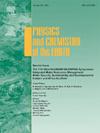Climate change and trends in europe and globally over the period 1970–2023
IF 3
3区 地球科学
Q2 GEOSCIENCES, MULTIDISCIPLINARY
引用次数: 0
Abstract
Accurate determination and monitoring of climate indicators are vital for understanding the true scope of climate change, planning effective adaptation and mitigation measures, ensuring the wise use of resources, and fostering public trust and support for necessary climate actions. This study focuses on the current status of climate change indicators and historical trends from 1970 to 2023. It provides a detailed comparative analysis of various climate indicators in Europe and globally, examining monthly and annual trends in key metrics. These indicators include air temperature (T), dew point temperature (Td), wet bulb temperature (Tw), specific humidity (q), relative humidity (RH), water vapor partial pressure (e), dew point depression (DPD), air density (ρ), total column precipitable water (TCPW), and total precipitation (TP). The study's findings highlight significant changes in these climate indicators across Europe, revealing notable differences from global trends and offering detailed insights into regional variations in climate change impacts. T, Td, Tw, q, RH, e, DPD, ρ, TCPW, and TP yearly anomalies relative to the 1991–2020 average for Europe in 2023 were found to be +1.0738 °C, +0.8497 °C, +0.8979 °C, +0.4338 g kg−1, -0.9414 %rh, +0.6612 hPa, +0.2241 °C, −0.0048 kg m−3, +1.2030 kg m−2 and +0.0413 m, respectively. However, the same climate indicators were computed globally as follows: +0.6008 °C, +0.4664 °C, +0.4919 °C, +0.2455 g kg−1, -0.5316 %rh, +0.3806 hPa, +0.1343 °C, −0.0026 kg m−3, +0.8200 kg m−2 and -0.0130 m.
1970-2023年欧洲和全球的气候变化和趋势
准确确定和监测气候指标对于了解气候变化的真正范围、规划有效的适应和减缓措施、确保明智地利用资源以及培养公众对必要气候行动的信任和支持至关重要。本研究的重点是1970 - 2023年气候变化指标的现状和历史趋势。它提供了欧洲和全球各种气候指标的详细比较分析,检查了关键指标的月度和年度趋势。这些指标包括空气温度(T)、露点温度(Td)、湿球温度(Tw)、比湿(q)、相对湿度(RH)、水蒸气分压(e)、露点降(DPD)、空气密度(ρ)、总柱可降水量(TCPW)和总降水量(TP)。该研究的发现强调了这些气候指标在整个欧洲的显著变化,揭示了与全球趋势的显著差异,并为气候变化影响的区域差异提供了详细的见解。与1991-2020年欧洲平均气温相比,2023年欧洲的T、Td、Tw、q、RH、e、DPD、ρ、TCPW和TP的年距平分别为+1.0738℃、+0.8497℃、+0.8979℃、+0.4338 g kg - 1、- 0.9414% RH、+0.6612 hPa、+0.2241℃、- 0.0048 kg m - 3、+1.2030 kg m - 2和+0.0413 m。然而,全球相同的气候指标计算如下:+0.6008°C、+0.4664°C、+0.4919°C、+0.2455 g kg - 1、- 0.5316% rh、+0.3806 hPa、+0.1343°C、- 0.0026 kg m - 3、+0.8200 kg m - 2和-0.0130 m。
本文章由计算机程序翻译,如有差异,请以英文原文为准。
求助全文
约1分钟内获得全文
求助全文
来源期刊

Physics and Chemistry of the Earth
地学-地球科学综合
CiteScore
5.40
自引率
2.70%
发文量
176
审稿时长
31.6 weeks
期刊介绍:
Physics and Chemistry of the Earth is an international interdisciplinary journal for the rapid publication of collections of refereed communications in separate thematic issues, either stemming from scientific meetings, or, especially compiled for the occasion. There is no restriction on the length of articles published in the journal. Physics and Chemistry of the Earth incorporates the separate Parts A, B and C which existed until the end of 2001.
Please note: the Editors are unable to consider submissions that are not invited or linked to a thematic issue. Please do not submit unsolicited papers.
The journal covers the following subject areas:
-Solid Earth and Geodesy:
(geology, geochemistry, tectonophysics, seismology, volcanology, palaeomagnetism and rock magnetism, electromagnetism and potential fields, marine and environmental geosciences as well as geodesy).
-Hydrology, Oceans and Atmosphere:
(hydrology and water resources research, engineering and management, oceanography and oceanic chemistry, shelf, sea, lake and river sciences, meteorology and atmospheric sciences incl. chemistry as well as climatology and glaciology).
-Solar-Terrestrial and Planetary Science:
(solar, heliospheric and solar-planetary sciences, geology, geophysics and atmospheric sciences of planets, satellites and small bodies as well as cosmochemistry and exobiology).
 求助内容:
求助内容: 应助结果提醒方式:
应助结果提醒方式:


